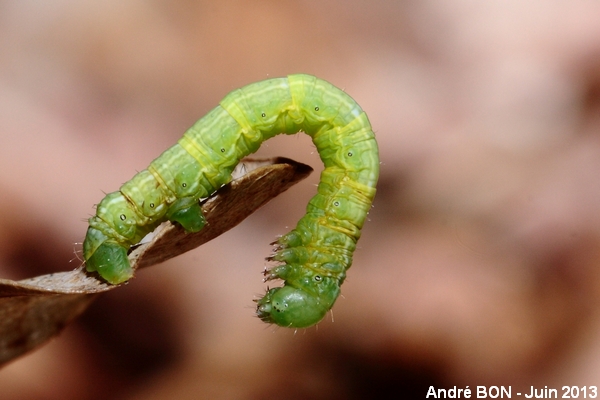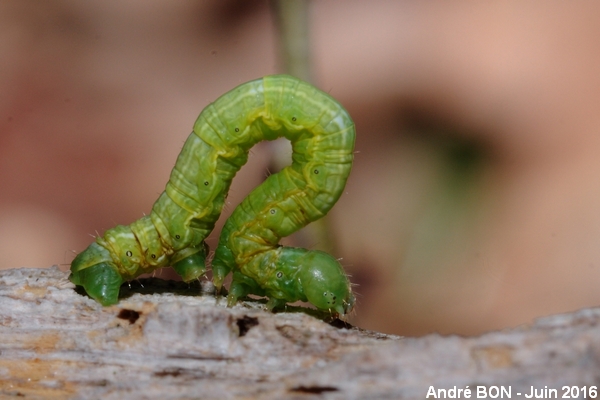

| March Moth (Alsophila aescularia (Denis & Schiffermüller, 1775)) |


|
|
Scientific name: Alsophila aescularia (Denis & Schiffermüller, 1775) Common name: March Moth French name: Phalène du marronnier, Alsophile printanière, Hibernie du Chêne. Order: Lepidoptera Suborder: Heterocera Family: Geometridae Subfamily: Alsophilinae Wingspan: 25 to 35 mm for males, females are wingless. Biotope: Sparse woodlands, hedgerows, orchards, parks and gardens. Geographic area: Europe, missing in the northern regions, in Corsica, in Malta and in the Greek Islands. There are some isolated populations in Turkey, in the Caucasus and in Turkmenistan. Flight time: February-April. Number of generations : 1 Caterpillar: Bright green with a dark dorsal line and pale lines on the lateral sides. It bears typical vestigial prolegs on the fifth abdominal segment (just ahead of the prolegs on segment 6). Host plant: Many deciduous trees including Common Oak (Quercus robur), Common Beech (Fagus sylvatica), Blackthorn (Prunus spinosa), etc. |
Females are wingless. They are a shiny greyish brown in colour and they bear a large anal tuft of hairs. Males have rather narrow wings and they are often landed with one wing over the other giving then an even more lengthy appearance. The fore wing are brownish grey in colour. They are generally crossed by two lighter coloured bands marked with tiny tooth-like darker spots. The hind wings are light grey. The eggs are deposited in batches around small twigs. March Moth overwinter as chrysalides. |
| [To know more about the March Moth] [Next picture] [Top] |

|
I have observed this caterpillar on the ground in the forest. I lifted it up on a dead leaf to shoot the picture. The thin dark dorsal stripe is not visible with this angle of view. I had previously listed this one as Operophtera brumata, but I fixed this error following one good remark from a nice visitor to my web site who indicated to me the clear vestigial prolegs you can see on the pictures. |
| [To know more about the March Moth] [Previous picture] [Top] |

|
Here is the typical position of the caterpillars of the Geometridae family when they move. |